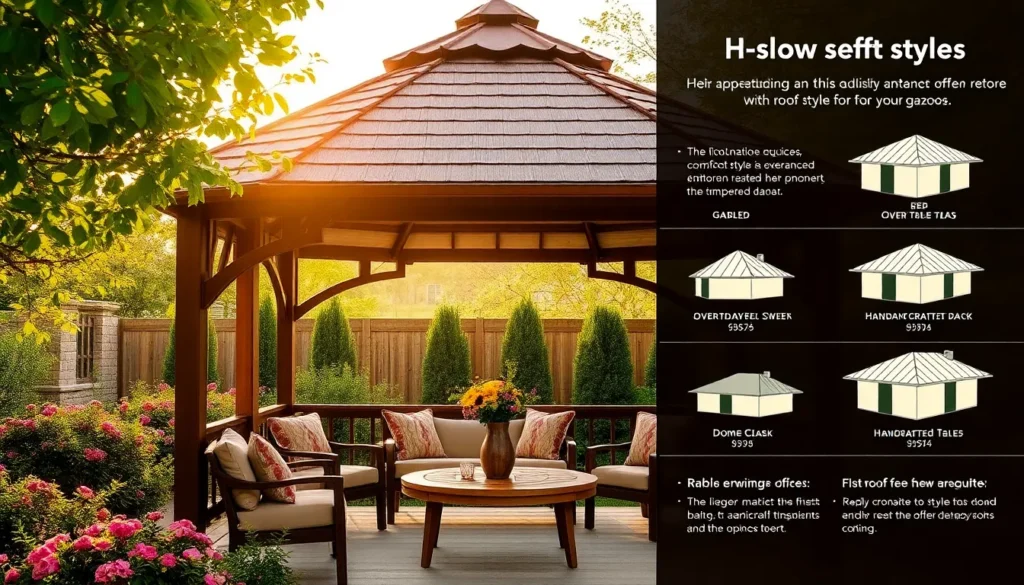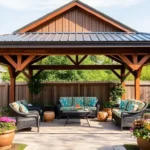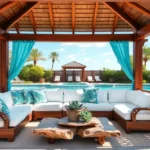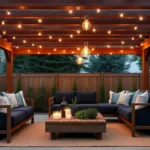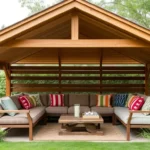Creating a serene outdoor retreat begins with choosing the right roof style for your gazebo, a decision that marries functionality with aesthetics. Whether you’re a seasoned homeowner looking to elevate your backyard oasis or a first-time buyer eager to craft a cozy haven, the roof style you select can transform your gazebo into a focal point that enhances both beauty and utility. This choice is more than just an architectural feature—it’s a cornerstone of comfort, offering shade on sunny days and shelter during unexpected showers.
In this article, you’ll discover a range of roof styles tailored to suit different tastes and climates, helping you make an informed decision that aligns with your vision and needs. From practical considerations like weather resistance to design preferences that reflect your personal style, we’ll guide you through each step with insightful tips and expert advice. Embrace the journey of creating an outdoor space that’s not only inviting but also uniquely yours.
Assess Your Gazebo’s Location Needs
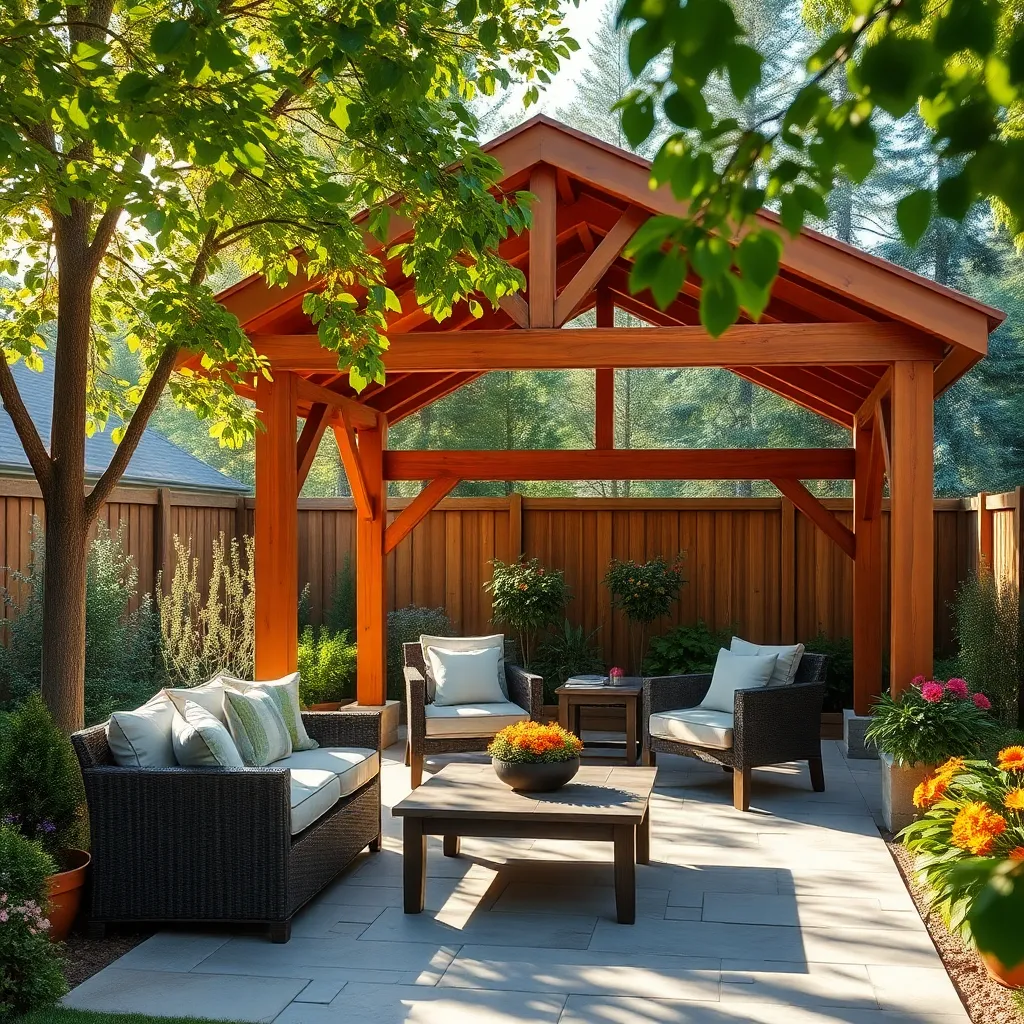
When assessing your gazebo’s location needs, consider both the aesthetics and functionality of the space. Start by evaluating the sun and shade patterns in your yard; placing your gazebo in a spot that receives afternoon shade can make it more comfortable during hot summer days. Additionally, think about the view you want to highlight or the privacy you need. Use materials like tempered glass or lattice panels to enhance privacy while maintaining an open feel.
For a solid foundation, ensure the ground is level and capable of supporting the structure. Concrete slabs are a durable option for stability, especially for larger gazebos, while pressure-treated wood can offer a more natural look. Advanced gardeners might consider integrating the gazebo with existing garden features, such as using climbing plants or vines to complement the gazebo’s design. This not only enhances the aesthetic but can also provide additional shade and privacy over time.
Evaluate Available Roof Styles

When evaluating roof styles for your gazebo, consider the overall aesthetic and functionality you desire. Pitched roofs are popular for their classic appearance and ability to effectively shed rain and snow, making them a practical choice for regions with heavy precipitation. For a modern look, a flat roof offers clean lines and can be constructed with materials like metal or treated wood, though it requires careful drainage solutions. If you’re in a sunny area, a pergola-style roof provides partial shade while allowing natural light to filter through, creating a welcoming ambience.
Material choice is crucial for durability and performance. Opt for pressure-treated wood or galvanized steel for long-lasting construction, especially in areas with harsh weather. For an eco-friendly option, consider a green roof, which involves planting vegetation on a waterproof membrane, offering insulation and reducing stormwater runoff. Ensure your selected style complements your home’s architecture by matching materials and colors, and consult local building codes to confirm your design meets all structural requirements. With thoughtful planning and the right materials, your gazebo roof will not only enhance your outdoor space but also stand the test of time.
Consider Weather and Climate Factors

When choosing the right roof style for your gazebo, it’s crucial to consider the local weather and climate. If you live in an area with heavy snowfall, opt for a steeply pitched roof like a gable or hip style to facilitate snow runoff and prevent structural damage. For regions with high winds, a low-slope roof with a reinforced frame can help minimize wind resistance and maintain stability.
Besides the roof style, material selection is equally important to withstand your climate conditions. Metal roofs, such as aluminum or galvanized steel, offer excellent durability in areas prone to rain and humidity, while cedar shingles or composite materials can provide a natural aesthetic and good insulation for temperate zones. Always ensure proper sealing and treatment of materials to extend the lifespan of your gazebo, especially if exposed to harsh elements.
Match Roof Style to Aesthetic

To harmonize your gazebo with your outdoor space, consider matching the roof style to your garden’s aesthetic. For a traditional look, a classic gable roof adds timeless charm and provides excellent water runoff, making it ideal for areas with heavy rainfall. If you prefer a more contemporary vibe, a sleek flat roof made of durable materials like metal or polycarbonate can offer a minimalist touch, blending seamlessly with modern landscapes.
It’s crucial to select materials that complement your home’s exterior. Wooden shingles or cedar shakes can enhance a rustic setting, while composite or metal roofing might better suit a modern home. Additionally, consider the color palette—matching the gazebo roof color to your house’s trim or accents can create a cohesive look. Advanced DIY enthusiasts might explore using solar panels on flat roofs to add functionality and sustainability to their outdoor shelter.
Consult Experts for Final Decision
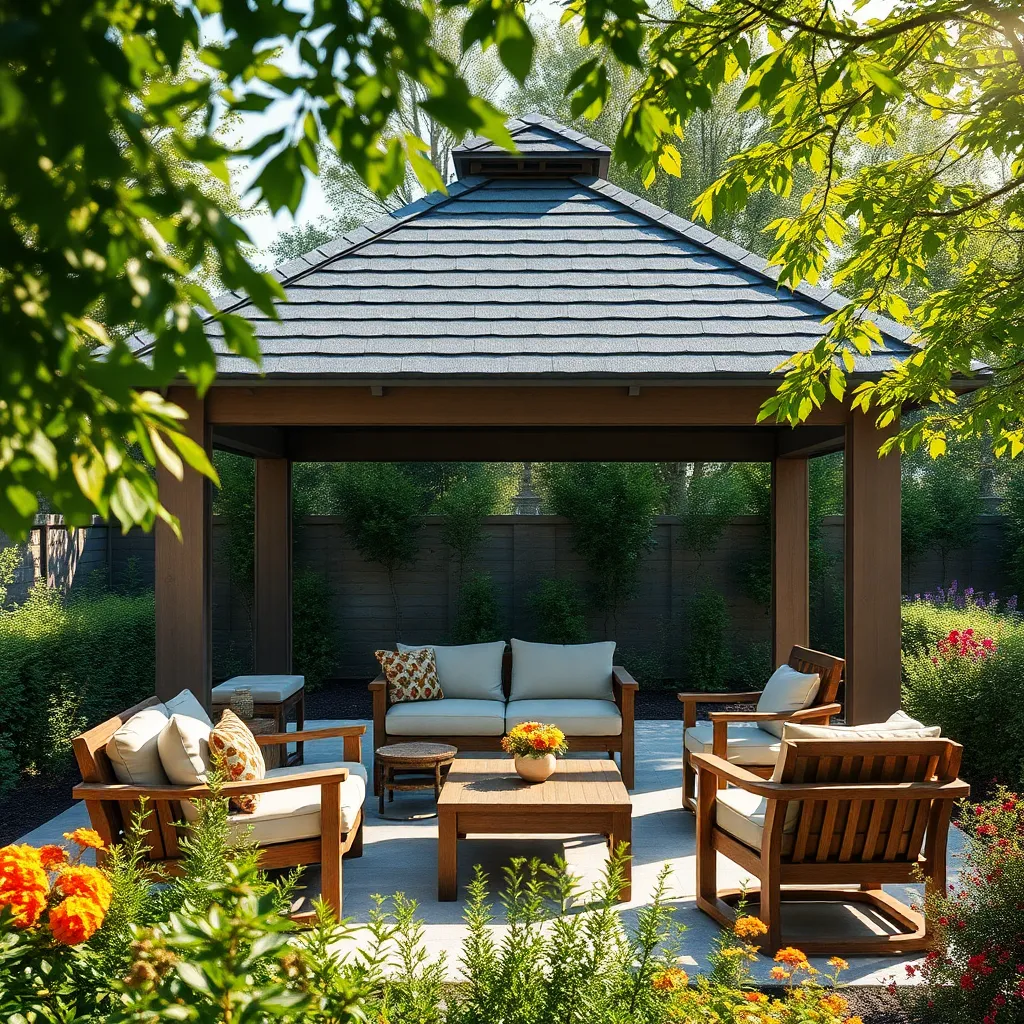
Consulting experts can be invaluable when making your final decision on a gazebo roof style. Professionals can provide specific advice on materials like cedar, which is known for its durability and natural resistance to insects, or metal, which offers longevity and low maintenance. They can also guide you on construction techniques, such as ensuring proper ventilation to prevent moisture buildup, which is crucial for maintaining the structure over time.
Experts can also help you tailor the design to your local climate and personal needs. For instance, if you live in an area prone to heavy snow, they might suggest a steeper roof pitch to prevent snow accumulation. Additionally, they can offer insights into advanced customization options, like integrating solar panels for energy efficiency or selecting a color palette that complements your home’s exterior. By tapping into professional expertise, you can ensure your gazebo not only meets your aesthetic desires but also stands the test of time.
Conclusion: Creating Beautiful Outdoor Spaces
In selecting the perfect roof style for your gazebo, we’ve explored five pivotal relationship concepts: understanding the importance of compatibility between your gazebo’s purpose and its roof design, recognizing how communication with your landscape shapes the overall aesthetic, valuing compromise between style and functionality, appreciating the longevity of trust in materials, and embracing the uniqueness of each choice as a reflection of your personal style.
Your immediate actionable step is to assess your outdoor space and envision how each roof style could enhance your relationship with your environment. Take a moment to prioritize what truly matters to you and your outdoor gatherings.
As you embark on this journey to transform your space, remember that small choices can lead to profound relationship successes. Save or bookmark this article to revisit these insights whenever you need guidance on crafting an outdoor space that mirrors the harmony you seek in life.
Empower yourself with the knowledge that thoughtful decisions today can build a foundation for lasting beauty and connection. Your gazebo is more than a structure; it’s an extension of your commitment to cultivating meaningful relationships.

